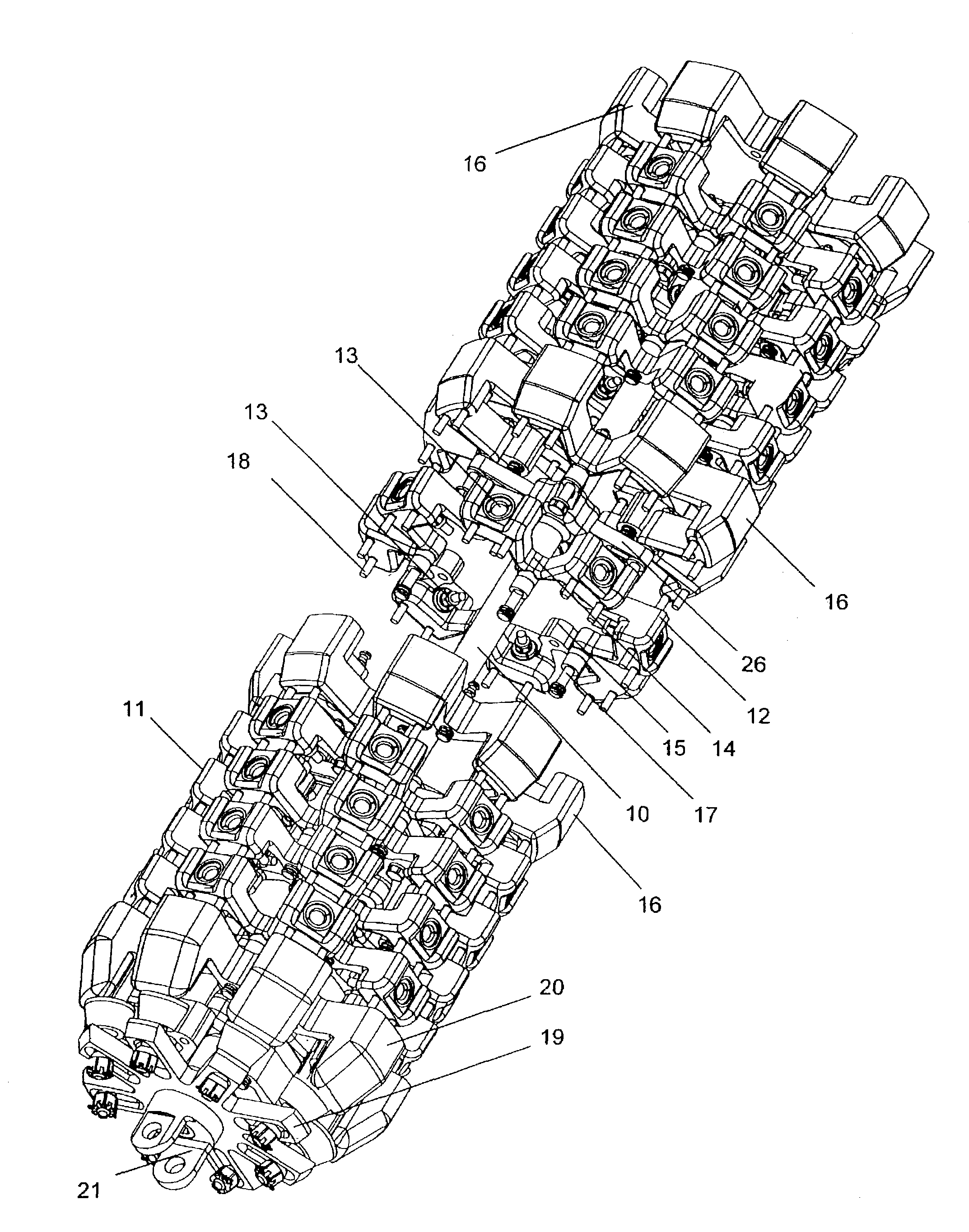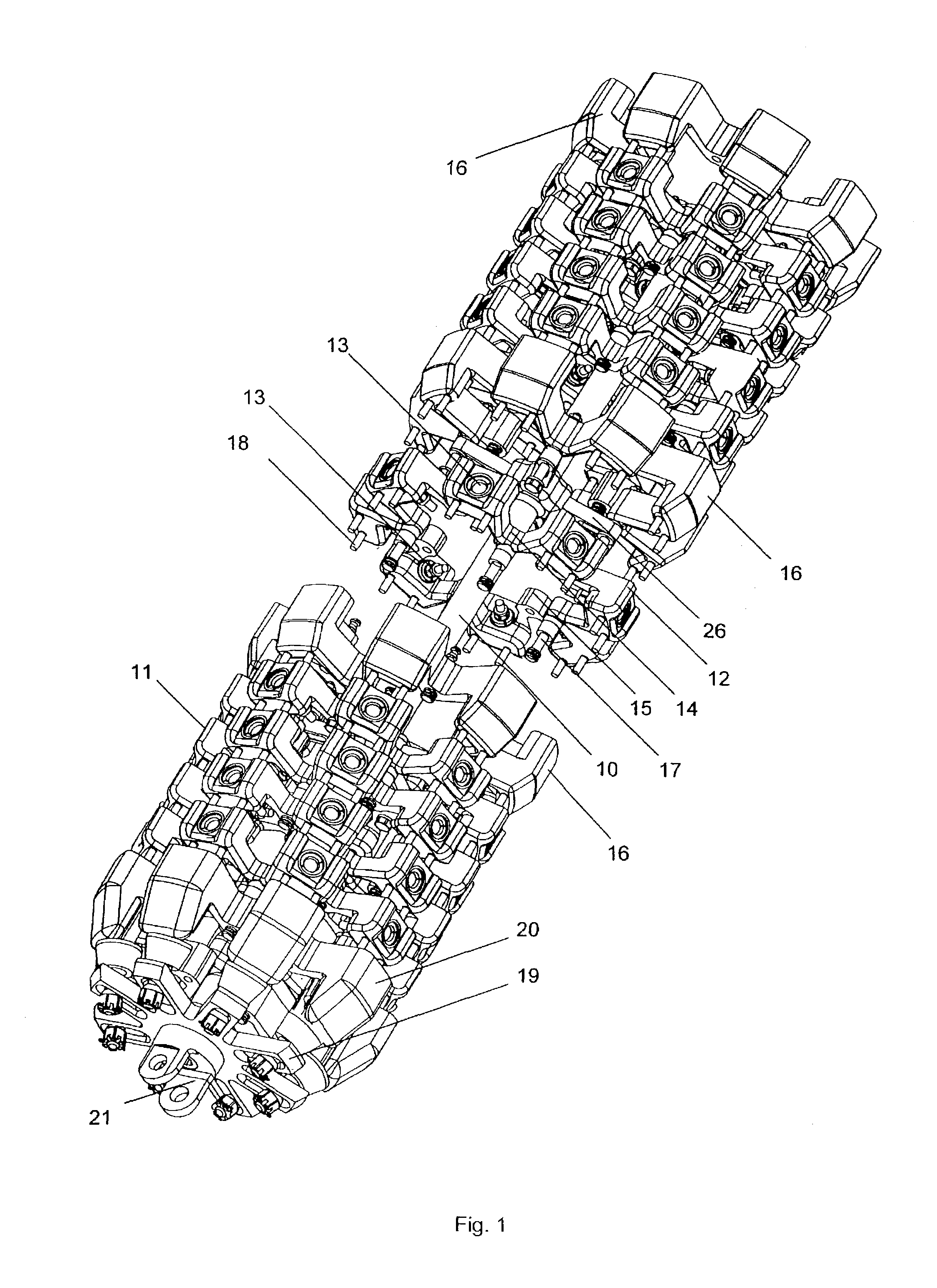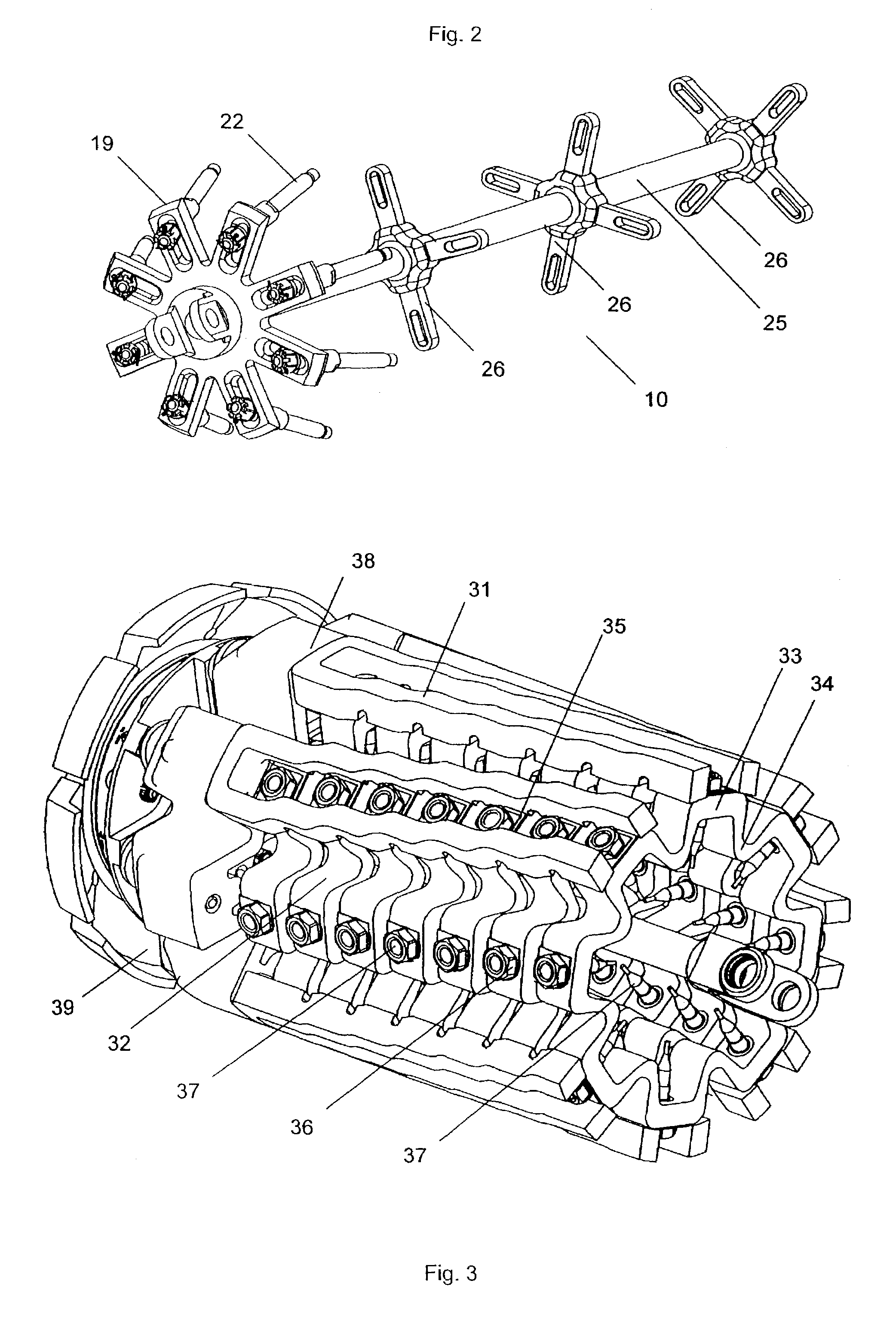Sensors carrier for in-tube inspection scraper
a technology of in-tube scraper and sensor carrier, which is applied in the direction of mechanical measuring arrangement, mechanical roughness/irregularity measurement, instruments, etc., can solve the problems of limiting the linear resolution of the inspection scraper with such a carrier, limiting the use of the above devices, and limiting the linear resolution
- Summary
- Abstract
- Description
- Claims
- Application Information
AI Technical Summary
Benefits of technology
Problems solved by technology
Method used
Image
Examples
Embodiment Construction
[0117]As a result of solving the technical problem of increasing the efficiency of the flaw detection of long distance pipelines, in-tube flaw detectors (in-tube inspection scrapers) for testing oil pipelines, gas pipelines and condensate pipelines with a nominal diameter from 10″ to 56″ have been developed. As a rule, the in-tube inspection scraper includes one or several sections forming explosion-proof shells and a sensor carrier. The shells accommodate a power supply and electronic equipment for measurements, processing and storage of the obtained measurement data in an onboard computer controlling the scraper operation during its travel inside the pipeline. The scraper housing has polyurethane sleeves centering the inspection scraper inside the pipeline and providing its movement by a flow of fluid conveyed through the pipeline, as well as odometers metering the distance passed inside the pipeline. The information on the length of the passed way measured by the odometers with b...
PUM
| Property | Measurement | Unit |
|---|---|---|
| angle | aaaaa | aaaaa |
| angle | aaaaa | aaaaa |
| angle | aaaaa | aaaaa |
Abstract
Description
Claims
Application Information
 Login to View More
Login to View More - R&D
- Intellectual Property
- Life Sciences
- Materials
- Tech Scout
- Unparalleled Data Quality
- Higher Quality Content
- 60% Fewer Hallucinations
Browse by: Latest US Patents, China's latest patents, Technical Efficacy Thesaurus, Application Domain, Technology Topic, Popular Technical Reports.
© 2025 PatSnap. All rights reserved.Legal|Privacy policy|Modern Slavery Act Transparency Statement|Sitemap|About US| Contact US: help@patsnap.com



